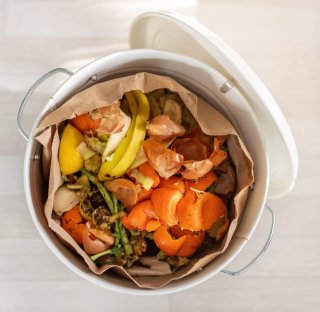Your Home and Your Community
The most effective strategy for mitigating food waste begins with a shift from passive consumption to active resource management. This proactive planning mindset is a core principle of applied behavioral economics, wherein the simple act of creating and adhering to a shopping list based on a pre-determined consumption plan minimizes irrational purchasing and reduces the incidence of surplus food. This process requires a brief, intentional audit of existing resources (your pantry and refrigerator) to prevent redundancy. This small behavioral adjustment can yield significant ecological and financial benefits by preventing the acquisition of surplus goods that are destined to be discarded. On a community level, this mindset can be extended to support local food systems; by planning meals around what is in season or available from local farmers’ markets, individuals can reduce the carbon footprint associated with long-distance transportation and directly support local growers and businesses.
Take a look at this video on the importance of planning ahead before shopping to prevent excess food waste.
Resource Conservation & Inventory Management
Once food resources enter the household, their lifecycle is directly influenced by proper conservation and inventory practices. This section explores strategies to extend the “useful life” of food, thereby reducing its environmental footprint. These methods range from simple refrigeration and humidity control techniques to the use of airtight containers for preservation. The implementation of a household inventory system, such as a “Use Me First” box, serves as a practical application of supply chain management principles, ensuring that perishable items are prioritized for consumption. This structured approach helps to minimize spoilage and conserve the embodied energy of the food.
Another crucial aspect of resource conservation is the mindful practice of smart portion control at the point of consumption. Serving appropriate portion sizes, rather than excess amounts, directly mitigates waste. From an ecological perspective, any food that is served but not consumed represents a final, unrecoverable loss of the embodied energy and resources used to produce it. For adults, this might involve using smaller plates to influence perception and serving just enough for one meal to avoid leftovers that may be forgotten. For children, it means starting with smaller, manageable portions and allowing them to request more, a practice that not only reduces waste but also empowers them to listen to their own hunger cues.
This simple behavioral intervention prevents valuable biomass from being scraped into the trash. On a local level, reducing personal waste frees up resources and can even lead to food-sharing opportunities. For example, a family with a surplus of preserved goods can share them with neighbors, or contribute to community fridges, fostering local food networks and reducing food insecurity.
Review this next video for a discussion of smart portion sizes:
The Art of Resource Recovery
Even with diligent planning and conservation, some food may approach the point of being unusable in its original form. This section introduces the concept of resource recovery and circularity within the household. Instead of entering the waste stream, food scraps and overripe produce can be creatively reintegrated into the food system. This practice aligns with ecological principles of minimizing waste and maximizing resource utility. From transforming wilting vegetables into rich stocks to converting stale bread into usable ingredients, these methods prevent valuable biomass from becoming landfill-bound waste, where it would contribute to greenhouse gas emissions.
This mindset of resource recovery is a powerful tool for community building. Excess produce from a garden can be shared with neighbors, and community composting programs allow individuals to collectively turn food scraps into nutrient-rich soil that can be used for local gardens. These actions close the loop on the food cycle at a grassroots level, strengthening local food systems and reducing the strain on municipal waste services.

If You Can’t Reduce Wasted Food, Divert It From Landfills
- Nutritious, safe, and untouched food can be donated to food banks to help those in need.
- Compost food scraps rather than throwing them away.
